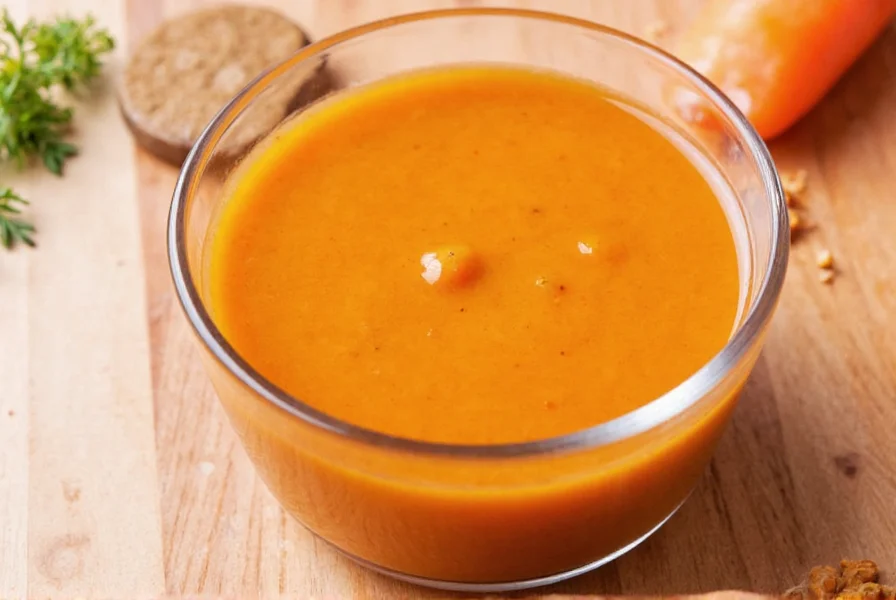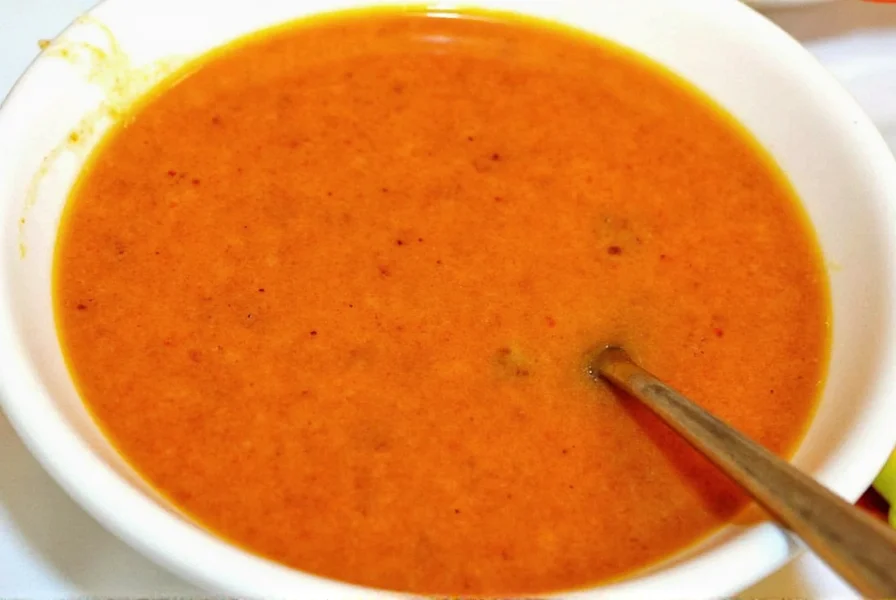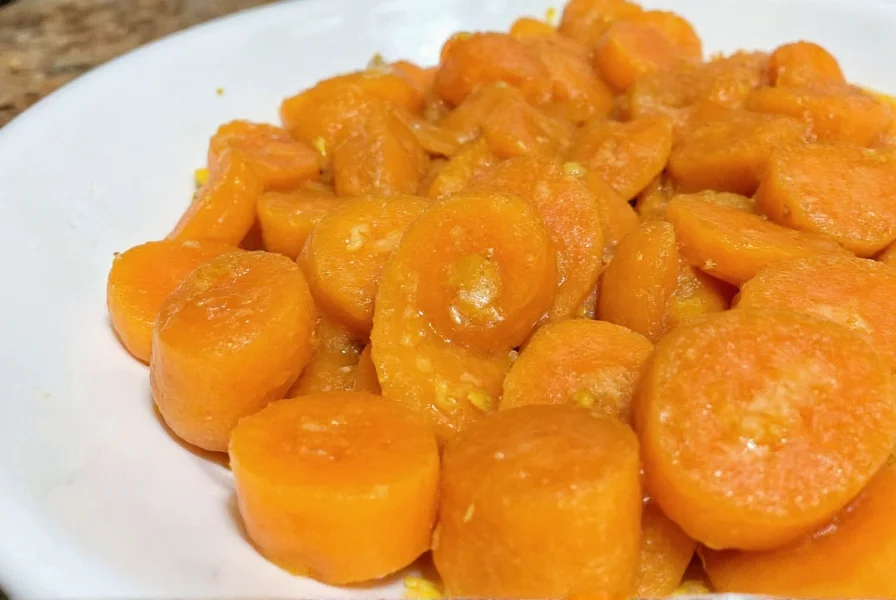Carrot and ginger dressing has surged in popularity among health-conscious food enthusiasts and professional chefs alike. This vibrant orange sauce delivers a perfect balance of sweet, tangy, and spicy flavors while packing a nutritional punch. Unlike store-bought alternatives filled with preservatives and added sugars, homemade carrot ginger dressing lets you control ingredients and customize flavors to your preference.
The Nutritional Powerhouse Behind Carrot Ginger Dressing
What makes this simple dressing stand out is its impressive nutritional profile. Carrots provide beta-carotene (which converts to vitamin A), fiber, and antioxidants, while ginger contributes anti-inflammatory compounds like gingerol. When combined with healthy fats from ingredients like olive oil or tahini, these nutrients become more bioavailable to your body.
Registered dietitian Maria Chen explains: "The synergy between carrots and ginger creates a dressing that's not just flavorful but genuinely beneficial. The vitamin C from citrus ingredients enhances the absorption of carotenoids from carrots, making this dressing more than just a tasty addition to your meal—it's a functional food that supports overall wellness."
| Key Nutrient | Primary Source | Health Benefit |
|---|---|---|
| Beta-carotene | Carrots | Supports vision and immune function |
| Gingerol | Ginger | Reduces inflammation and nausea |
| Vitamin C | Lemon juice | Boosts immunity and nutrient absorption |
| Healthy fats | Olive oil/tahini | Supports heart health and nutrient absorption |
Essential Ingredients for Perfect Carrot Ginger Dressing
The beauty of this dressing lies in its simplicity. You need just six core ingredients to create a restaurant-quality sauce at home:
- Fresh carrots (1 cup, steamed or raw) - The base ingredient providing natural sweetness and vibrant color
- Fresh ginger (1-2 inches) - Delivers the signature spicy kick (adjust to taste)
- Citrus juice (3 tbsp lemon or orange) - Adds necessary acidity to balance flavors
- Healthy fat (2-3 tbsp olive oil or tahini) - Creates emulsion and enhances nutrient absorption
- Garlic (1 small clove) - Adds depth of flavor (optional but recommended)
- Seasoning (salt to taste, plus optional spices like cumin or coriander)

Step-by-Step Preparation Guide
Follow these simple steps to create perfect carrot ginger dressing every time:
- Prepare your carrots - Steam 1 cup of chopped carrots for 5-7 minutes until tender (this enhances sweetness and makes blending easier), or use raw carrots for a more vibrant, earthy flavor
- Peel and chop - Peel 1-2 inches of fresh ginger and 1 small garlic clove
- Combine ingredients - In a high-speed blender, add cooked carrots, ginger, garlic, 3 tablespoons citrus juice, 2-3 tablespoons olive oil or tahini, and salt to taste
- Blend until smooth - Process for 1-2 minutes, stopping to scrape down sides as needed, until completely smooth with no visible fibers
- Adjust consistency - Add water 1 tablespoon at a time if too thick, or more citrus if too thin
- Taste and refine - Adjust ginger for more heat, citrus for more tang, or a touch of maple syrup if you prefer sweeter dressing
Storage and Shelf Life Tips
Proper storage ensures your homemade carrot ginger dressing maintains freshness and flavor:
- Store in an airtight container in the refrigerator for up to 5 days
- For longer storage, freeze in ice cube trays then transfer to freezer bags for up to 3 months
- Always use clean utensils when serving to prevent contamination
- Shake or stir before use as natural separation may occur
Creative Ways to Use Carrot Ginger Dressing
While excellent as a salad dressing, this versatile sauce shines in numerous applications:
- Grain bowl base - Drizzle over quinoa, farro, or rice bowls with roasted vegetables
- Marinade - Use as a flavorful marinade for chicken, tofu, or tempeh
- Dipping sauce - Serve with spring rolls, roasted vegetables, or as a veggie dip
- Wrap enhancer - Spread inside wraps or sandwiches for added moisture and flavor
- Roasted vegetable finisher - Drizzle over roasted sweet potatoes or Brussels sprouts

Troubleshooting Common Issues
Even simple recipes can present challenges. Here's how to address common problems when making carrot ginger dressing:
- Too thick - Gradually add water or additional citrus juice, 1 tablespoon at a time, until desired consistency
- Too thin - Add more cooked carrots or a tablespoon of tahini to thicken
- Too spicy - Balance with a touch of maple syrup or additional citrus
- Not smooth - Ensure you're using a high-speed blender and blend for full 1-2 minutes
- Lacks depth - Add a teaspoon of miso paste or a pinch of cumin for complexity
Variations to Suit Different Dietary Needs
Carrot ginger dressing easily adapts to various dietary preferences:
- Vegan version - Already naturally vegan; ensure sweetener is plant-based if used
- Nut-free option - Stick with olive oil instead of nut-based alternatives
- Lower fat version - Reduce oil and increase citrus or water for thinner consistency
- Sweetness alternatives - Use date paste instead of maple syrup for refined sugar-free option
- Spice variations - Add a pinch of cayenne for extra heat or turmeric for additional anti-inflammatory benefits
Nutritional Information Per Serving
One serving (2 tablespoons) of basic carrot ginger dressing contains approximately:
- Calories: 65
- Total Fat: 5g (healthy monounsaturated fats)
- Carbohydrates: 5g
- Dietary Fiber: 1g
- Sugar: 3g (naturally occurring)
- Protein: 0.5g
- Vitamin A: 120% of daily value
- Vitamin C: 15% of daily value
Why Homemade Beats Store-Bought Every Time
Commercial dressings often contain preservatives, artificial colors, and excessive sugars that diminish both flavor and nutritional value. When you make carrot ginger dressing at home, you control exactly what goes into it. You'll notice a brighter flavor, fresher ingredients, and the satisfaction of creating something wholesome with minimal processing. Plus, homemade dressing costs significantly less per serving than premium store-bought versions.
Professional chef Michael Rodriguez notes: "The difference between homemade and commercial dressings is night and day. With homemade carrot ginger dressing, you get the vibrant, fresh flavor of actual carrots and ginger, not just extracts and flavorings. It transforms simple salads into memorable meals."
Frequently Asked Questions
Can I make carrot ginger dressing without a blender?
Yes, you can make a simpler version by finely grating cooked carrots and ginger, then mixing with citrus juice, oil, and seasonings. While the texture won't be as smooth as blended versions, it still delivers great flavor. For best results without a blender, use a food processor or immersion blender if available.
How can I make my carrot ginger dressing creamier without adding dairy?
For a creamier texture without dairy, increase the tahini to 3-4 tablespoons or add 1/4 avocado to the blender. Both options create a richer mouthfeel while keeping the dressing plant-based. Cooked white beans also work well for added creaminess and protein.
Why does my carrot ginger dressing separate in the fridge?
Natural separation occurs because homemade dressings lack emulsifiers found in commercial products. Simply shake or stir vigorously before use. For better emulsion, ensure you blend the dressing thoroughly and consider adding 1 teaspoon of Dijon mustard, which acts as a natural emulsifier.
Can I use bottled citrus juice instead of fresh?
While fresh citrus juice delivers superior flavor, you can use bottled juice in a pinch. Expect a slightly less vibrant taste, and you may need to adjust quantities as bottled juices often contain preservatives that affect acidity. For best results with bottled juice, choose varieties without added sugars or preservatives.
What's the best way to adjust carrot ginger dressing for different palates?
Customize your dressing by adjusting key elements: increase ginger for more heat, add citrus for tanginess, include a touch of sweetener for balance, or incorporate spices like cumin for depth. The beauty of homemade dressing is tailoring it precisely to your taste preferences—start with the basic recipe then refine to your liking.











 浙公网安备
33010002000092号
浙公网安备
33010002000092号 浙B2-20120091-4
浙B2-20120091-4